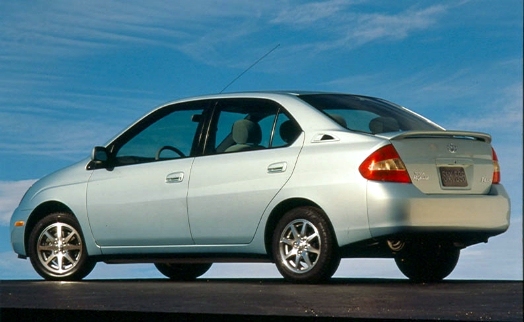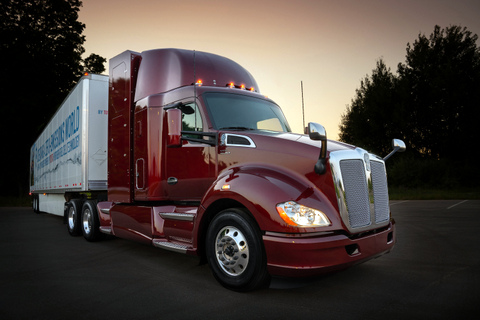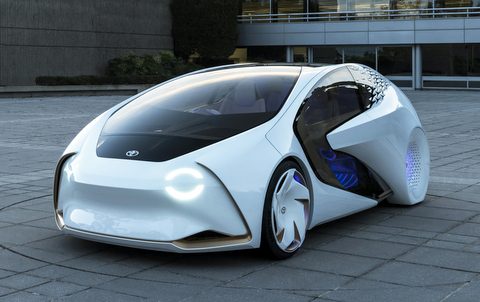Automaker Moves on Vehicle, Other Fronts
Often at new vehicle introductions or ride-and-drive events, it’s all nuts and bolts, horsepower and torque, drag coefficients and mpg—the details of an automobile. At a recent Toyota event, we had the chance to take the discussion to a higher level and talk about corporate environmental impacts. but it does come back to the cars.

Over the past few years, auto companies have begun seriously addressing their ecological footprint. Starting with the vehicles they offer, but also looking at how factories and offices impact their communities, which, in turn, can affect those vehicles. At first the movement was driven by trying to be “green,” but smart companies now realize there are huge financial benefits to being environmentally smart, while reducing pollution, emissions and fuel use.
In December 2017, Toyota announced and implemented the “Toyota Environmental Challenge 2050”. The six challenges will take them “beyond zero environmental impact and achieve a net positive impact.” Toyota has a vision that will affect all aspects of their company. Clean Fleet Report is interested how their “challenge” will change their vehicle line-up in the coming years. Here is an overview, setting the stage for an exciting future.
The First and the Most
Toyota was the first auto manufacturer to sell a mass-produced hybrid vehicle in the United States. When the 2000 Prius hit American roads (it had been on sale in Japan for three years), many ridiculed it for its cheese wedge shape, awkward sharp lines and folds and, of course, a dual powertrain that uses electricity and gasoline. This was in the era of full-size SUVs clogging every road and parking lot, and minimal attempt by the Big Three to invest in the future. (Remember Who Killed the Electric Car?) Toyota took the plunge and after a few years the Prius became the best-selling hybrid sedan in the world, and Toyota was vying with Volkswagen as the top-selling auto brand in the world.

Today, if you walk into a Toyota dealership, you will find the broadest line-up of electrified cars, crossovers and SUVs to choose from. Each offers something different, from large to small: Highlander Hybrid, Avalon Hybrid, Camry Hybrid, RAV4 Hybrid, Prius Hybrid and Prius Prime PHEV (Plug-in Hybrid Electric Vehicle), Mirai Hydrogen FCEV (Fuel Cell Electric Vehicle), and the just released all-new 2020 Corolla Hybrid.
If you want to step-up to a more premium vehicle, Toyota’s Lexus Division offers, in alphabetical order, the ES, LC, LS, NX, RX and UX Hybrids.
The Vehicle Commitment
Toyota, by 2025 will offer every model in the Toyota and Lexus line-up available as either a dedicated electric or with an electrified option. The ramp-up will see 10 BEV (Battery Electric Vehicles) introduced worldwide in the early 2020s as well as FCEV in passenger and commercial vehicles in this timeline. When it happens, Toyota will have fulfilled a commitment that they’ve been talking about since that first Prius arrived.

This means, the Tundra and Tacoma trucks, as well as the 86 and Supra sports cars will be electrified to some degree. The trucks will be a big deal. Truck owners are very loyal to what works for them, which by 2025 will mean they have been in either a V6 or V8 for many years, so considering an electrified truck will be a big decision. Of course competitive moves by FCA (which already offers a mild hybrid Ram) and upcoming full-electric Ford and GM pickups should soften up the market. The sports cars will be an absolute blast! The LC Hybrid already hints at this.
Beyond Cars
Toyota is not just looking at passenger vehicles and light trucks for electrification. It is making a significant financial and technological commitment to hydrogen for large commercial vehicles.

In a public-private partnership with the Port of Los Angeles (POLA), the California Air Resource Board (CARB), Kenworth and Shell, Toyota is building the infrastructure for a “shore to store” plan. Also part of this plan are the California Energy Commission, the National Renewable Energy Laboratory and the South Coast Air Quality Management District. Yes, it takes a village to build hydrogen infrastructure!
The plan includes building two large-capacity hydrogen fueling stations at the POLA, and the development of 10 new, zero-emission hydrogen fuel cell electric Class 8 Kenworth semi trucks. Class 8 trucks are the over-the-road 18-wheelers that are vital to the movement of all consumer products from a port to distribution centers and then to retailers. The goal of zero and near-zero emission freight transport will be a boon for the air quality in Southern California.
The Future Is Now

Toyota is building towards a zero and near-zero emission future for all its vehicles, with little concern for political winds that may change. The company’s hybrid efforts give them a good head start and brand recognition for fuel efficiency. But they’re not the only players in this game. For consumers, the next generation of vehicles coming from all manufacturers will offer more variety, performance and efficiency than at any time in history.
So, hang on for what will be a fun and wild ride!

Related Stories You Might Enjoy–Toyota’s Electric Path
First Drive: 2020 Toyota Corolla Hybrid
Road Test: 2019 Lexus LS 500h Hybrid
Road Test: 2019 Toyota Mirai
Comparison Test: 2019 Lexus UX 200 & 250h Hybrid
Road Test: 2019 Toyota Camry Hybrid
Road Test: 2019 RX 450h Hybrid
LA Auto Show: 2019 Toyota Prius AWD Debuts
Road Test: 2018 Toyota Prius Prime PHEV
Road Test: 2018 Lexus LC 500h Hybrid
Road Test: 2019 Toyota Avalon Hybrid
Road Test: 2018 Lexus NX 300h Hybrid

1 thought on “Feature: Toyota Aims for 2050 Environmental Goals”